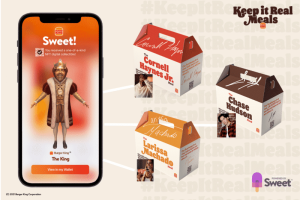Second Thoughts: 5 May Be Too Short, Some Say
Google’s longstanding message to publishers to focus on web page load time speeds and reduce the number of ads that appear on one page might be falling on deaf ears.
As recently as this week, agencies and ad industry insiders began calling out Sports Illustrated because its home page took about one minute to load between 30 and 40 different technologies from ad networks, including tag providers and ad servers, such as DoubleClick.
“You have an entire LUMAscape of companies loading in the browser window,” said Aaron Goldman, CMO at 4C, a data science and marketing technology company.
Goldman wrote a blog complete with video posted on LinkedIn that shows how many ad tags were loading in the browser, which brought into question today’s ad-serving practices, as well as the length of time an ad should appear online before being charged per impression.
He noticed that Sports Illustrated served five ad units simultaneously on the site’s home page. The abundance of ads served at the same time on one page can slow the page load times, and can push the publisher’s listing down the page in the search results.
Meredith, the parent company of Sports Illustrated, wrote in an email to MediaPost that SI.com ads conform to IAB guidelines for “refreshing” ads, which means ads in rotation within an ad unit.
Agencies and ad insiders also noticed the ad rotation speed was too rapid, with some ads rotating at a speed of about 5 seconds per impression.
While viewable ad impressions have a minimum length requirement to appear on a screen before being counted as viewable — one second for a display ad, and two seconds for a video ad — there does not seem to be a clear requirement for the length of time an ad needs to appear on a page before the publisher can charge the advertiser an impression.
David Gunzerath, senior vice president and associate director at the Media Rating Council, in an email to MediaPost wrote the length of time the ad needs to become viewable on a page before a publisher can charge the advertiser a per impression rate is up for “negotiation between buyer and seller.”
He noted “many buyers will only pay if an ad meets the viewable impression requirements; others may not require viewability to be met.”
Tim Daly, CEO at Vincodo, an online marketing and media services agency that has been using Time Inc.’s private marketplace for the past couple of months, points to the speed at which the ads on the page refresh or rotate as a problem for advertisers. The ads are billed by impression. Daly estimates that impression lasts about five seconds.
“The refresh speed certainly explains the awful click-through rates we have seen and the ‘too good to be true’ view-based engagement that we can now determine is nothing more than cookie stuffing,” he wrote in an email to MediaPost. “We’ve added Time Inc. sites to our blacklist across all of our clients until these unethical acts are ceased.”
Five seconds is much too quick, according to several advertising executives contacted by MediaPost. The five-second impression on Sports Illustrated dropped the click-through rate for ads run by Vincodo’s clients by 83%, when compared to other sites that use a longer refresh rate. He estimates that Vincodo’s private marketplace media buy with Sport Illustrated through DoubleClick Bid Manager generated a 0.02% CTR. Other publishers are closer to between 15 seconds and 30 seconds.
The other concern, per Daly, is Sports Illustrated classifies the five seconds as a “viewable” impression, which Daly think misrepresents the measurement.
(74)





